Chevy Volts on 1,200 mile drive - Click above for high-res image gallery
Yesterday, we had an opportunity to chat with Chevrolet Volt chief engineer Andrew Farah as he rode through the hills of West Virginia during a development drive. On Tuesday, a fleet of eight pre-production (a.k.a. IVER) Volts set out from the company's Milford Proving Ground in Michigan on three day, 1,200 mile jaunt through Ohio, Pennsylvannia, Maryland, West Virginia and back. This event is known in General Motors' engineering process as a "65-Percent Drive" and as it implies it's one of a series of milestones on the road to production.
The 65% roughly corresponds to the minimum level of completeness of development of all the hardware, and more specifically, the software. At this point, many of the systems are in fact approaching 90-100% complete. Over the next several months, 70, 80, 90 and 100 percent drives will follow on the way to production launch a year from now. Read on to find out what we learned from Farah.
This drive is being used evaluate a variety of aspects of real world performance – especially the charge sustaining mode. Over the course of the drive, at various times, parts of the fleet are being run with a full charge while others are being run with the battery depleted. For example, on day two, only half of the cars were plugged in overnight at the motel, a scenario that is very likely to occur on a road trip with the Volt. According to Farah, regardless of the state of charge, overall vehicle performance was comparable and there was no degradation.
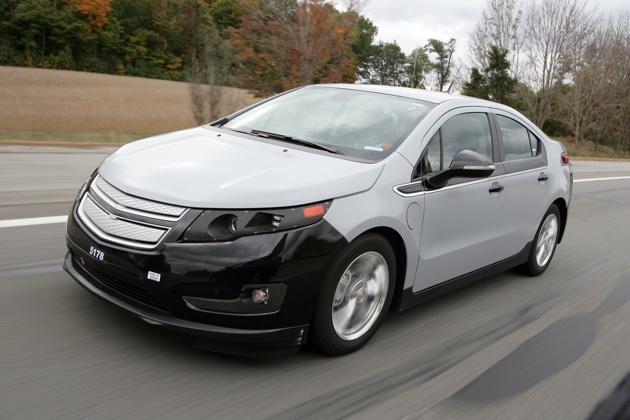
One of the big questions about the Volt's charge sustaining mode has been the behavior of the engine and overall NVH characteristics. Early on, the thought was that during charge sustaining mode, the engine would simply run at a constant speed to maintain the battery level. However, over time the engineering team realized that wasn't necessarily the most efficient way to run the engine. The engine-generator will be feeding power directly to the drive motor on an as-needed basis, with any surplus energy going to the battery.
The generator won't be trying to completely recharge the battery, as that would be less efficient overall than taking electricity off the grid. However, the actual battery state of charge will fluctuate somewhat around the minimum charge level based on high level power demands and charging from the generator and regenerative braking.
The plan now is to run the engine-generator between approximately 1,200 and 4,000 rpm. A map that looks at factors like speed and power load requirements will be used to select the desired engine speed. Because engines typically run more efficiently at higher loads where they can avoid pumping losses, the intent is to keep the engine between 30 and 100 percent load whenever possible. Farah declined to get specific about just what kind of mileage the Volt is currently getting in steady state charge sustaining mode.
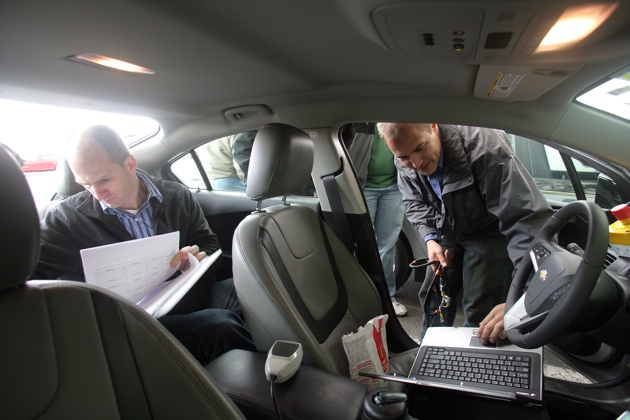
Farah did tell us that the final capacity of the fuel tank has not yet been decided upon, but that the prototypes are currently easily exceeding the 300 mile range target on a tank. The cars are not being run to full empty on this trip, but based on the amount of fuel that was put in on the first two fill-ups, 300 miles won't be an issue with gasoline. The Volt, of course, is also a flex-fuel vehicle and some of the cars will be filled with E85 on the final day before returning to Milford.
At this point, the cars are running in near ideal conditions for a battery powered car, not to hot or too cold – both conditions that degrade performance. Farah acknowledges that there are still some "node" inefficiencies in the pre-production vehicles, so in their current form, they aren't quite hitting the 40 mile range target – but they are close. He expects to hit the bogey with the next round of testing.
Another aspect of the Volt's behavior that is being evaluated is its noise, vibration and harshness. As we know, electric vehicles are typically very quiet, and the Volt is in essence an EV. The concern is that when the engine generator starts up, there will be a significant increase in noise. Farah tells us that in general, the Volt will always be running in EV mode at startup and low speeds. Typically, the engine won't come on until the vehicle is motion, when factors like road and wind noise start to overwhelm any sound of the engine. Nonetheless, Farah seems satisfied with the powertrain NVH, although the crew is still working on some road and wind noise issues between 25 and 40 mph.
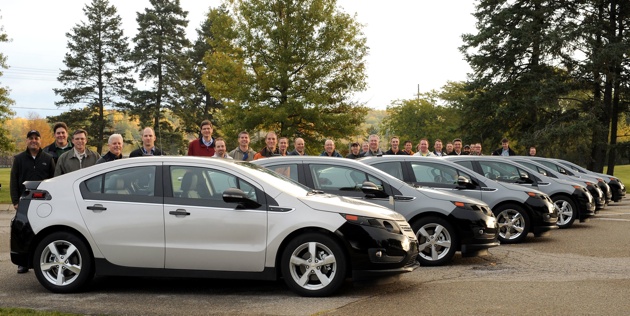
The silent start likely won't always be the case, however. As we've previously heard from GM's Denise Gray and Bob Kruse, in cold conditions the engine may start up immediately to help support the heating and defrosting needs of the car. This will be especially true if the Volt hasn't been plugged in. No doubt this will be one of the major issues evaluated during cold weather testing over the next several months.
Recently, another team of Volt engineers took the car to Pikes Peak in Colorado for evaluation as it climbed the 14-mile road to the 14,000-foot summit. One of the concerns about the the Voltec powertrain has been that once the battery is depleted, the performance of the car would drop significantly. Because the battery is typically only used down to about 30-35% charge, there is some reserve left over when the engine-generator is running. When at full power beyond the engine-generator's approximately 100 hp output, the battery can be drawn down further.
Eventually, however, the battery will reach a point where it can't provide any more juice. Beyond that, only the engine generator provides power, a condition Farah dubbed the "tipping point." According to GM engineer John Blanchard, "The entire trip was run in charge sustaining (range-extended mode) and system was able to maintain State of Charge during the entire drive." If that is true, it bodes well for any kind of real world usage pattern never hitting that tipping point.
Not having experienced the Volt's charge sustaining mode firsthand, we'll reserve judgment and take Farah at his word – for now. Once Farah and his team return to Michigan late Thursday, they will start diving into all the data and notes to determine what areas still need more work before the 70 Percent Drive. Perhaps with any luck, we'll join the party.
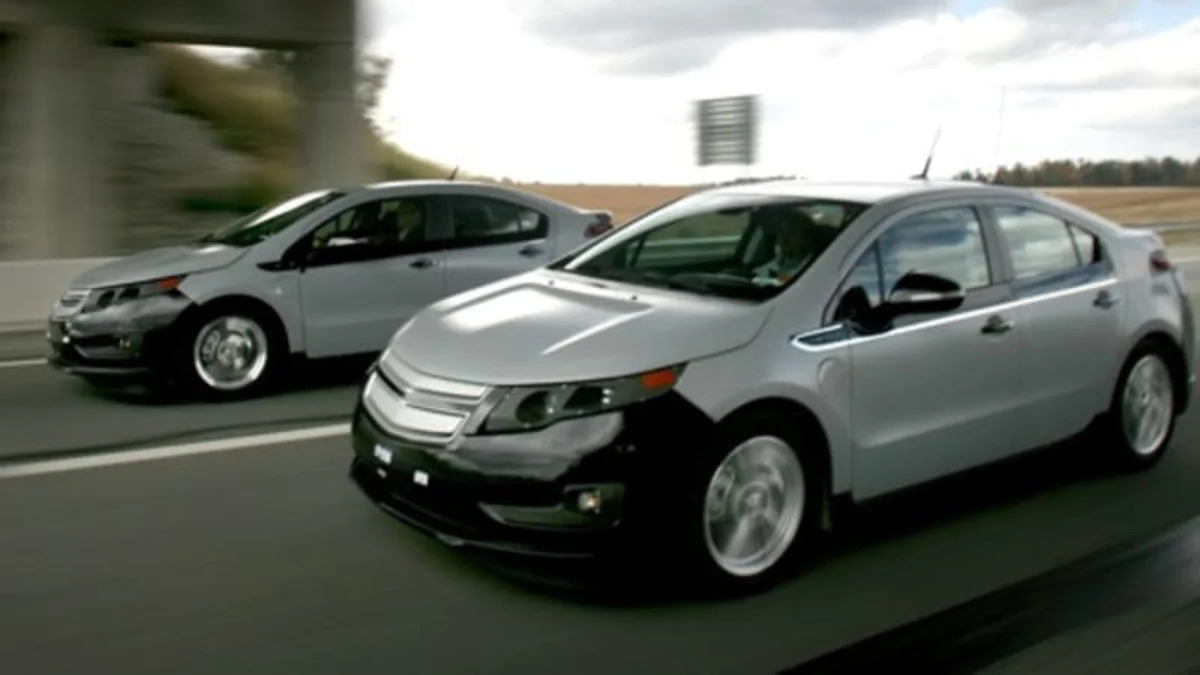
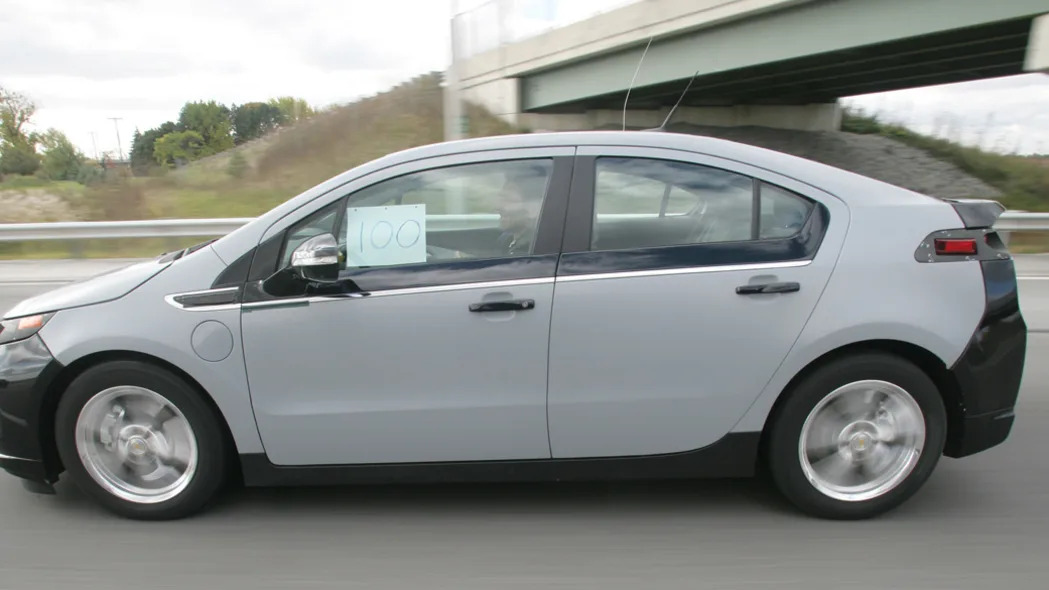

Sign in to post
Please sign in to leave a comment.
Continue